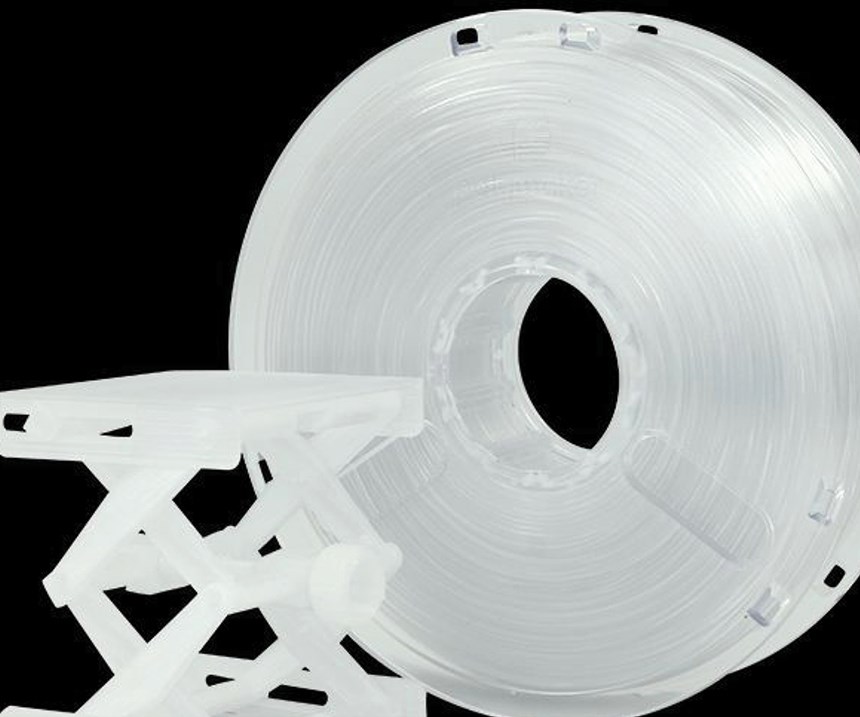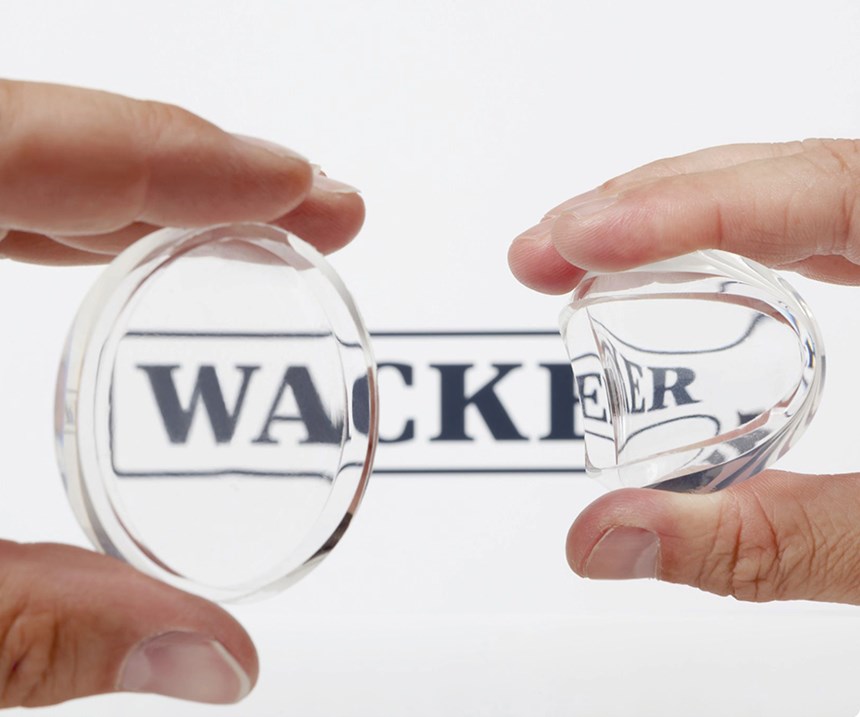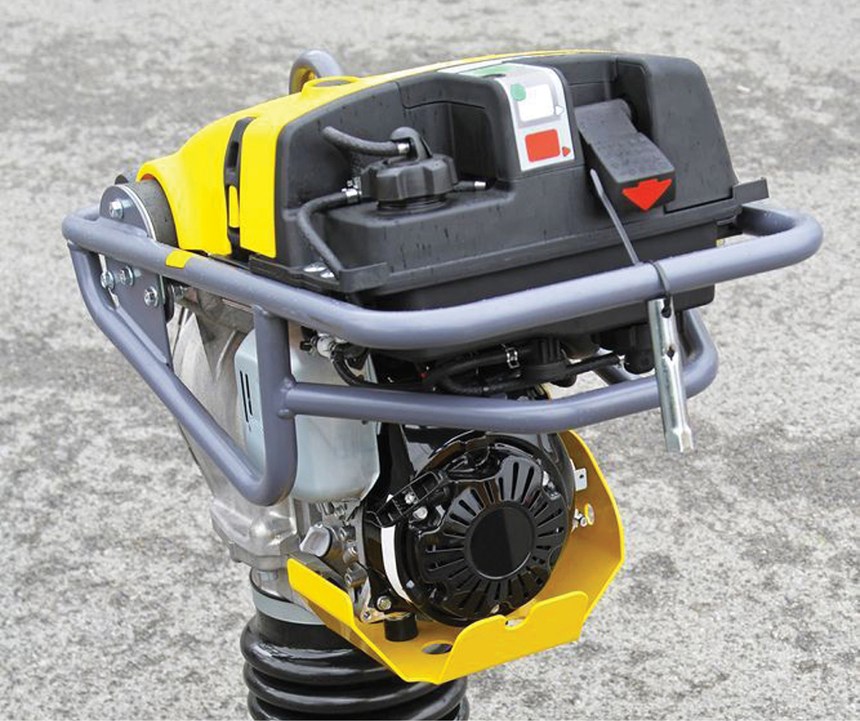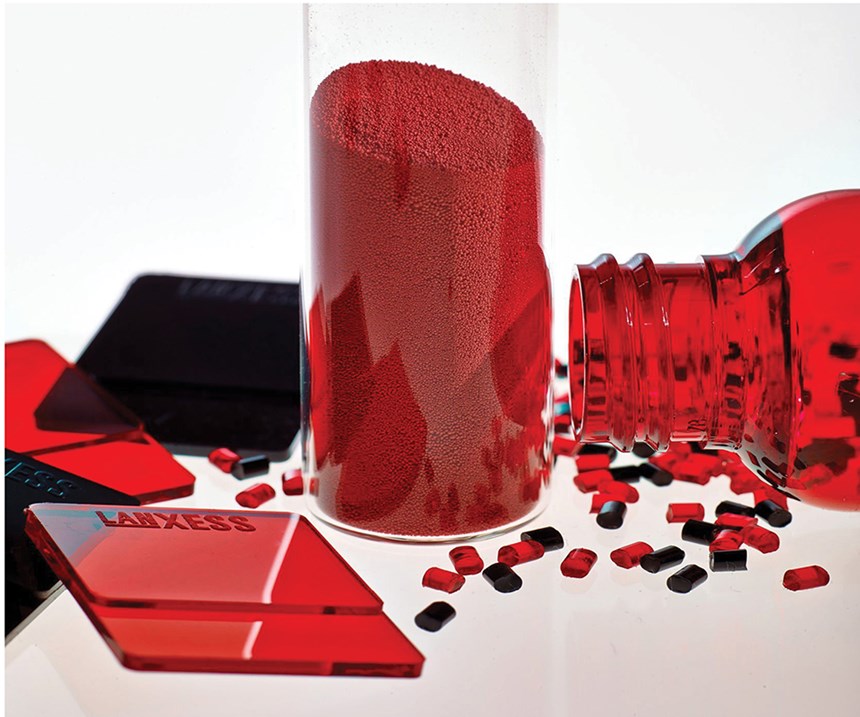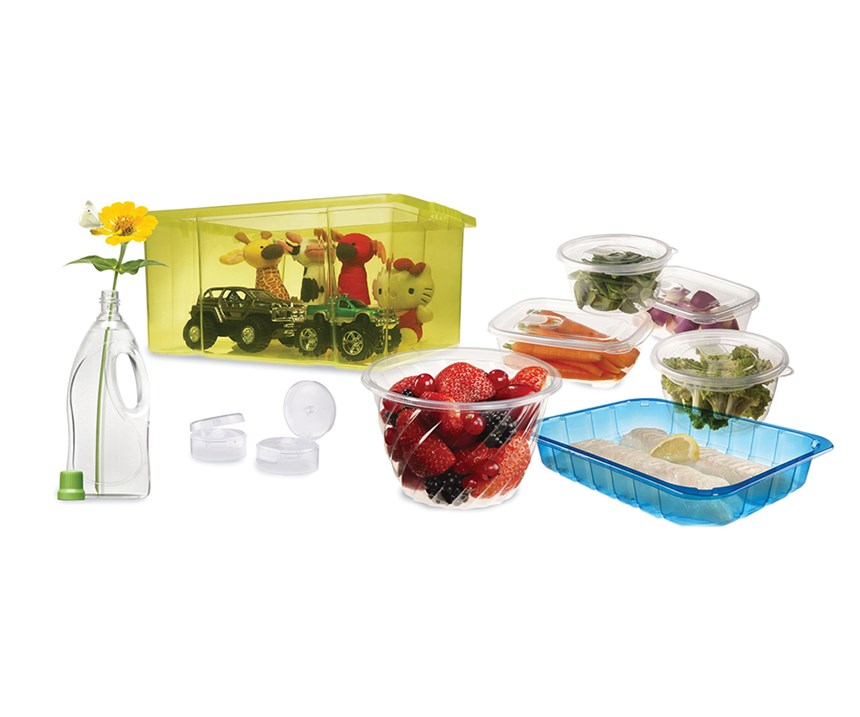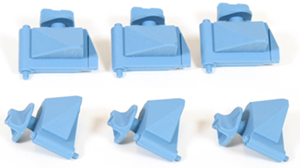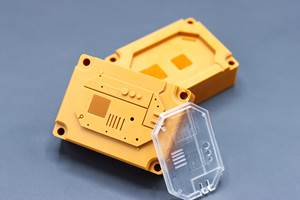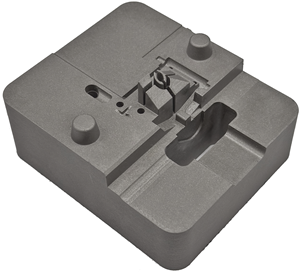K 2016 Preview: Materials & Additives
Driving the wide range of new developments in engineered plastics and additives are higher performance, safety, and sustainability.
The K 2016 show will present quite a range of higher-performing engineered plastics, including nylons, PC, polyolefins, thermoplastic composites, and 3D-printing materials, as well as additives. Prominent applications include transportation, electrical/electronic, packaging, lighting, construction, and consumer goods.
TOUGHER, LIGHTER ENGINEERING RESINS
Specialty nylon compounds are dominant in this crop of new materials, which also include new PCs for automotive, aircraft, electronics, construction, and healthcare; carbon-fiber reinforced PC/ABS; PEI filaments for aircraft prototypes; and nylon powders for prototypes and functional testing.
DSM Engineering Plastics (U.S. office in Troy, Mich.) will launch the ForTi MX family of polyphthalamides (PPAs) based on nylon 4T, touted as the one of the most cost-effective alternatives to die-cast metals. Like the other ForTi materials, the MX grades are partially aromatic, semi-crystalline polymers that surpass other PPAs in mechanical strength and toughness across a broad range of temperatures. Available with 30-50% glass fiber, MX grades have application potential in structurally loaded parts such as housings, covers, and brackets in automotive powertrain, air and fuel systems, and chassis and suspension, as well as industrial pumps, valves, actuators, home appliances, and fasteners.
BASF (U.S. office in Florham Park, N.J.) will showcase its expanded range of partially aromatic nylons and launch a new portfolio of PPAs. The Ultramid Advanced N portfolio comprises unreinforced PPAs and compounds reinforced with short- or long-glass fibers, as well as flame-retardant grades. They are said to exceed the properties of conventional PPAs with consistent mechanicals up to 100 C (212 F), glass-transition temperature of 125 C (257 F), outstanding chemical resistance, low water absorption, and low friction and wear. Short cycle times and a wide processing window are also reported. Ultramid Advanced N PPA is suitable for small connectors and function-integrating housings in white goods, consumer electronics, and mobile devices. It can be used in automotive components and structural parts near the engine and gearbox in contact with hot, aggressive media and different fuels. Gear wheels and other wear parts are among other applications.
Lanxess (U.S. office in Pittsburgh) will feature its easy-flowing nylons and PBT, customized for cost-effective lightweight design and said to offer shorter cycle times and a wider processing window. Debuts include a new generation of Durethan BKV 30 XF (XtremeFlow). This nylon 6 with 30% glass succeeds Durethan DP BKV 30 XF and is more than 17% easier flowing. Compared with Durethan BKV 30, a standard nylon 6 with 30% glass, the new material’s flowability is 62% higher. It is said to produce outstanding surfaces. It has potential in automotive for mounts and brackets.
Also new are three nylon 6 compounds: Durethan BG 30 X XF, BG 30 X H2.0 XF, and BG 30 X H3.0 XF. Reinforced with 30% glass fibers and microbeads, they are said to exhibit outstanding flow and exceptionally low warpage. Their flowability is said to be more than 30% higher than Durethan BG 30 X, a similar standard nylon 6. The compound with H3.0 thermal stabilization has a very low copper and halide content and is customized for natural and lightly colored applications in electrical/electronics parts such as plugs, plug connectors, and fuse boxes. The H2.0 version is for components that are colored black and subjected to higher heat loads.
Houston-based Ascend Performance Materials has developed new high-flow and flame-retardant nylon 66 compounds for electronics, and nylon 66 copolymers (with nylons 610 or 612) that boast the same CLTE as aluminum for use as window profiles in large industrial/commercial buildings. Moreover, the company has entered the food packaging market with new nylon 66 compounds for products such as oven bags and meat-packaging films only 40 microns thick (vs. a typical 50-60 microns). They boast improved toughness, high-temperature and chemical resistance, and excellent bonding with EVOH.
Solvay Specialty Polymers, Alpharetta, Ga., will launch two new series of Technyl nylons: one is a heat-performance nylon 66 for thermal-management applications; the other is said to be an innovative nylon 66 range with a controlled halogen content for sensitive electrical/electronic uses.
For eco-designed applications, Solvay will launch Technyl 4earth, said to result from a "breakthrough" recycling process able to revalue technical textile waste—initially from airbags—into high-quality nylon 66 grades with performance comparable to prime material.
New additions to the Technyl Sinterline nylon powder line for 3D printing of functional prototypes will also be featured by Solvay.
So.F.Ter. (U.S. office in Lebanon, Tenn.) will launch its new line of Literpol B compounds based on nylon 6 reinforced with hollow-glass microspheres for light weight, particularly in automotive. They boast good strength and shock resistance, dimensional stability, and short cycle times.
Victrex (U.S. office in West Conshohocken, Pa.) will feature new types of PEEK and their applications. Included will be new Victrex AE 250 PAEK composites, developed for aerospace (see March Keeping Up). For automotive, the company will feature its new online PEEK gears package. A new type of PEEK and a record-length PEEK composite structure in the form of spoolable underwater pipe will highlights of the exhibit’s oil and gas section.
Covestro (U.S. office in Pittsburgh) will showcase new Makrolon PC grades and emerging applications that include wrap-around PC glazing for all-around visibility in electric cars; PC glazing for the cockpit of solar-powered aircraft; and PC sheet for transparent infrastructure construction. New Makrolon 6487, a high-tech, precolored, UV-stabilized PC, was selected earlier this year by Digi International, a global provider of mission-critical machine-to-machine and IoT (internet of things) connectivity products.
Covestro will also feature new Makrolon AX PC injection grades (with and without UV stabilizer) for automotive panoramic roofs as well as roof trim and pillars . “Cool black” colors were developed to help keep the PC surface cool, while significantly increasing weathering performance.
New materials for 3D printing will also be highlighted by Covestro, which is developing a range of filaments, powders, and liquid resins for all common 3D-printing methods. Current offerings for the fused filament fabrication (FFF) process range from flexible TPU to high-strength PC. TPU powders for selective laser sintering (SLS) are also offered.
SABIC (U.S. office in Houston) will showcase new materials and applications for industries from transportation to healthcare. Included are new PC copolymers for injection molding aircraft interior parts; PC sheet for the healthcare sector; carbon-fiber reinforced PC/ABS for transportation; PC glazing for automotive rear windows; and PEI filaments for 3D printing of aircraft prototypes.
HIGHER-PERFORMING POLYOLEFINS
SABIC will also highlight PEs and PPs for flexible packaging with a focus on lighter weight, safety, and sustainability. One example is its extended line of PE and PP for pouches to enable further enhancements in stiffness, sealing performance, and retortability.
Among the new entries is the very-high-flow Flowpact PP family for thin-wall food packaging and LDPE NC308 film grade for very thin-gauge packaging. The latter boasts super drawdown, running stable at film thickness as low as 12 μm for both mono and coex films. Another highlight will be a line of renewably sourced PE and PP resins based on waste fats and oils.
The newly expanded Exceed XP family of high-performance PE resins (see June Keeping Up) will be featured by Houston-based ExxonMobil Chemical. Also featured will be Vistamaxx 3588FL, the latest in a line of propylene-based elastomers, said to feature outstanding sealing performance in cast PP and BOPP films; and Enable 40-02 mPE for thin, strong collation shrink films that reportedly have excellent combinations of stiffness, tensile strength, holding force, and excellent shrink performance. Such films are well suited for products such as bottled beverages, canned goods, and health, beauty, and cleaning products that require tight, secure secondary packaging and sustainability. A three-layer collation shrink film that includes Enable 40-02 mPE can be processed at 60 μm, 25% thinner than three-layer films of LDPE, LLDPE and HDPE, says ExxonMobil.
Dow Chemical, Midland, Mich., will demonstrate new flexible packaging being developed with Italy’s Nordmeccanica SpA, a specialist in coating, laminating, and metallizing machinery. Dow will also feature its new family of Innate Precision Packaging Resins, said to offer unmatched stiffness/
toughness balance with improved processing and sustainability due to lightweighting potential. Produced with a patented molecular catalyst coupled with advanced process technology, they are said to help customers address some of today’s most challenging performance gaps in food, consumer, and industrial packaging. These resins have been shown to have up to twice the abuse resistance of standard PE resins in coextruded films.
Borealis of Austria (U.S. office in Port Murray, N.J.) is bringing several new developments to the fair. At the last K show, Borealis Plastomers was formed to market the Exact polyolefin plastomer and elastomers—renamed Queo—that had been acquired from Dex Plastomers in The Netherlands, a joint venture of DSM and ExxonMobil Chemical. After three more years of R&D and investing in Compact solution polymerization technology—now rebranded Borceed—Borealis is introducing three new Queo polyolefin elastomer (POE) grades with lower densities (0.868-0.870 g/cc) and MFR from 0.5 to 6.6. They are aimed at industrial films, highly resilient flooring (such as playground surfaces and running tracks), cable bedding compounds, hot-melt adhesives, grafted polymers for coex tie layers, and PP modification for TPOs. They boast very high flexibility (<2900 psi modulus), lower melting points (55-75 C/131-167 F), and improved low-temperature performance (glass transition at -55 C/-67 F).
Borealis also announced a new focus on its Daploy HMS (High Melt Strength) PP for lightweight, closed-cell foams blown with inert gas injection. PP foams have new potential due to regulations banning EPS foams in various localities. This opens up opportunities in food-service and packaging, such as easily printable cups that are thin like paper cups; and construction and insulation, such as United Nations refugee shelters.
Borealis’ sister company Nova Chemicals (U.S. office in Pittsburgh) will highlight its development of the all-PE standup pouch for dry foods, including pet foods. This multilayer film structure offers recyclability, unlike the standard PET/PE laminate, while offering the ability to run on the same lines at the same speeds. It boasts exceptional moisture barrier and good surface or reverse printability.
NOVEL LSRS
Wacker Silicones (U.S. office in Adrian, Mich.) will mold what's said to be a “completely new LSR” on an Engel press. Lumisil LR 7601 LSR boasts very high transparency and won’t yellow over a product’s entire lifetime, opening up new potential in optical lenses as well as coupling elements for lighting exposed to high heat, and for sensors. This LSR can transmit visible light virtually unobstructed and withstand up to 200 C/392 F for long periods.
Another reportedly novel LSR being launched by Wacker is Elastosil LR 3003/90, said to achieve an extremely high 90 Shore A hardness after curing. Due to its high level of hardness and rigidity, this LSR can be used to replace thermoplastics or thermosets. It is suitable as a hard substrate in two-component molded parts, for example, and can be used to manufacture hard/soft combinations that consist of LR 3003/90 and softer silicone layers.
For automotive, Wacker will feature a couple of new LSRs. Elastosil LR 3016/65 is said to feature enhanced resistance to hot motor oil for long periods, suiting it to parts like o-rings and other seals. Also new is Elastosil LR 3072/50, a self-adhesive LSR that cures in a very short time to form an oil-bleeding elastomer with high elastic recovery. Particularly suitable as a seal in two-component parts, it’s aimed at automotive electronics and electrical systems, where the product is used in single-wire seals, and at connector housings with radial seals.
An LSR that cures to form a steam-resistant and hydrolytically stable elastomer will also be featured. Fast-curing Elastosil LR 3020/60 is said to be suitable for seals, gaskets, and other products that need to withstand hot water or steam. Post-cured test specimens stored for 21 days in autoclaves with steam at 150 C/302 F have a compression set of 62%.
In other materials news, Polyscope (U.S. office in Novi, Mich.) will highlight its expanded range of Xiran IZ terpolymers based on styrene, maleic anhydride, and N-phenylemaleimide. Used as heat-booster modifiers, they can increase the heat resistance of ABS, ASA, PS, SAN, and PMMA for automotive and appliance components, including sunroof frames. The newest grade has a glass-transition temperature of 198 C (388 F) and can be exposed to high processing temperatures. Use level of Xiran SMA copolymers in blends is typically 20-30%, but new Xiran IZ heat boosters are used at 2-3%.
Huntsman Corp, The Woodlands, Tex., will feature several TPUs in new industrial applications. Its abrasion-resistant TPUs have now been deployed in heavy-duty construction equipment such as whacker plates, which flatten out road and pavement surfaces.
ADDITIVES NEWS
Among the mix of new additives are unique anti-counterfeiting additive masterbatches; several novel UV and heat stabilizers; pigments for automotive, electronics, packaging and construction; processing aids; and nucleating agents.
• Anti-counterfeit masterbatches: A novel fluorescent-based technology will be unveiled by Clariant. (U.S. office in Holden, Mass.). Through an exclusive global partnership with an unnamed anti-counterfeit technology company, Clariant will supply masterbatches for components and packaging. Clariant is field testing in various markets and seeking FDA food-contact approvals.
• Stabilizers: A new generation of methylated HALS will be showcased by BASF. Tinuvin 880 is said to be suited to auto interior parts made of PP, TPOs, and styrenic blends. This novel stabilizer has been shown to provide unmatched long-term UV resistance along with drastically improved thermal stability.
It is also designed to improve secondary properties by eliminating defects such as mold deposit and surface stickiness, even in scratch-improved materials.
Also targeting automotive is Korea’s Songwon (U.S. office in Houston; songwon.com) with the latest addition to its Songxtend line of proprietary heat stabilizers. New Songxtend 2124 is said to provide improved long-term thermal stability (LTTS) to glass-reinforced PP in molded interior parts and can meet the industry’s stringent demand for LTTS performance of 1000 hr and beyond at 150 C (302 F).
BASF will also highlight Tinuvin XT 55 HALS for polyolefin films, fibers, and tapes. This new high-performance light stabilizer shows very low contribution to water carryover. It’s designed for geotextiles and other construction textiles, roofing insulation, barrier structures, and carpets that have to withstand harsh climate conditions such as prolonged UV exposure, fluctuating and elevated temperatures, and environmental pollutants. This HALS is said to provide excellent secondary properties like color stability, gas fading, and extraction resistance.
Brueggemann Chemical (U.S. office in Newtown Square, Pa.) is launching Bruggolen TP-H1606, a nondiscoloring copper-complex heat stabilizer for nylons that boasts significantly improved long-term stabilization over a broad temperature range. This antioxidant comes in a non-dusting blend. It is said to offer an improved alternative to phenolic-based stabilizer blends as it greatly extends the exposure time, especially in the low-to-medium temperature range, where phenolic blends have been standard.
• Pigments: Modern Dispersions Inc., Leominster, Mass., will showcase its new series of blue-tone carbon-black masterbatches for auto interior applications like door and instrument panels. Developed to meet growing demand for blue-tone blacks for such applications, these masterbatches can be used in a range of resins including PE, PP, and TPO, at typical levels of 5-8%.
Central to Huntsman’s exhibit will be novel pigments for applications ranging from packaging and construction profiles to automotive and electronic components. Huntsman will also feature its new Tioxide TR48 TiO2, which is said to process well, even at high temperatures. Designed for use in polyolefin masterbatches, BOPP films, and engineering compounds, TR48 boasts easy dispersion and excellent tint-reduction capabilities, and it was designed for low-VOC formulations. It is geared to premium and general packaging, consumer electronics, and automotive components.
Safety and sustainability along with performance improvement will be major themes at Clariant’s booth, including safe plastics coloration, such as with new PV Fast Yellow H4G to replace lead chromates in PVC and polyolefins. This FDA-compliant organic benzimidazolone is said to have three times the color strength of lead-based pigments, so lower levels are needed, as well as excellent opacity and weather fastness.
Also new is quinacridone PV Fast Pink E/EO1, made with bio-succinic acid, reducing carbon footprint up to 90% compared with petrochemical-based colorants. It’s suited to coloring toys and food packaging.
Clariant’s recently launched Polysynthren Black H is an IR-transparent dye that enables easy sorting of black articles made from engineering resins such as nylons, ABS, and PC during recycling. It has a very pure black tone and is said to eliminate the difficulty of sorting carbon-black colored articles by IR cameras, since they absorb IR light.
Lanxess’ Rhein Chemie Additives will feature the latest in its line of organic Macrolex Gran colorants, said to provide brilliant coloring of plastics such as PS, ABS, PET, and PMMA. Consisting of hollow spheres, the high-purity Macrolex microgranules can be very easily crushed, which translates to quick and even dispersion. The excellent free-flowing properties of the 0.3-mm spheres make precise metering easier and prevent clumping during mixing.
• Flame Retardants: AddWorks LXR 920 from Clariant is a new flame-retardant masterbatch for polyolefin roofing sheets that also offers UV protection.
• Processing Aids/Lubricants: Wacker is introducing the Vinnex line of additives for bioplastic compounds. Based on polyvinyl acetate, these additives are said to significantly enhance the processing and property profile of biopolyesters or starch blends. For example, Vinnex 2526 reportedly greatly simplifies manufacture of highly transparent, biodegradable PLA and PBS (polybutylene succinate) films, optimizing both melt and bubble stability during extrusion. Blister packs can be produced at lower temperatures and with more uniform thickness distribution.
Vinnex 2522, 2523, and 2525 are said to boost processing and heat-sealing properties in paper coating with PLA or PBS. With the aid of these grades, film-coated paper cups can be composted and recycled more readily. Vinnex 8880 is designed to enhance melt flow for injection molding and 3D printing.
Also new from Wacker are Genioplast WPC thermoplastic silicone additives designed for more efficient manufacture of PE, PP, and PVC wood-plastic composites. They act primarily as lubricants, reducing internal and external friction during extrusion. Tests show that addition of 1% (vs. 2-6% for typical lubricants) results in 15-25% higher throughput. Initial grades are PP 20A08 and HDPE 10A03, which reportedly give WPC parts higher impact and flexural strength than with standard additives, and also reduce water absorption.
• Clarifiers/nucleators: Clariant will showcase new Licocene PE 3101 TP, a metallocene-catalyzed PE tweaked to serve as a nucleator for PS foams. It is said to be more economical than standard nucleating agents while offering similar solubility, viscosity, and drop point. Brueggemann will feature new Bruggolen TP-P1401 nucleating agent for reinforced nylons that can be processed at elevated temperatures, enabling short cycle times and supporting a morphology with very small, homogeneously distributed crystal spherulites. This reportedly improves both mechanical properties and surface appearance.
Milliken & Co., Spartanburg, S.C., will discuss new applications and case studies featuring the benefits of its Millad NX 8000 and Hyperform HPN nucleators. Both have proven to perform effectively in high-flow PP, responding to increasing demands for faster production.
Related Content
Business Slowing? There's Still Plenty of Stuff to Do
There are things you may have put off when you were occupied with shipping parts to customers. Maybe it’s time to put some of them on the front burner.
Read MoreMake Every Shot Count: Mold Simulation Maximizes Functional Parts From Printed Tooling
If a printed tool only has a finite number of shots in it, why waste any of them on process development?
Read MoreGetting into Plastics Additive Manufacturing? Avoid these Six Common Errors
There are a lot of 3D printing technologies out there, and it’s not uncommon for processors new to additive manufacturing to get tripped up. Here are some typical snafus, along with advice on how to avoid them before you start making parts.
Read MoreProduction Tool, Prototype Time
Mantle's metal 3D printing technology targeted toolmaking and injection molders and moldmakers are taking notice.
Read MoreRead Next
Processor Turns to AI to Help Keep Machines Humming
At captive processor McConkey, a new generation of artificial intelligence models, highlighted by ChatGPT, is helping it wade through the shortage of skilled labor and keep its production lines churning out good parts.
Read MorePeople 4.0 – How to Get Buy-In from Your Staff for Industry 4.0 Systems
Implementing a production monitoring system as the foundation of a ‘smart factory’ is about integrating people with new technology as much as it is about integrating machines and computers. Here are tips from a company that has gone through the process.
Read More



